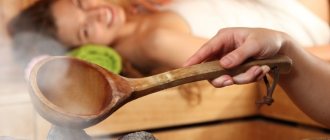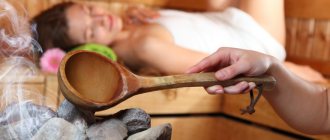With sinusitis, there is difficulty breathing, as the nasal mucosa swells and mucous masses accumulate in the maxillary sinuses. Poor air supply contributes to slight hypoxia, which affects the tissues, since they receive limited oxygen. The inflammatory process is traditionally treated with heating. Therefore, the question of whether it is possible to go to the bathhouse with sinusitis is usually answered positively.
Sinusitis: description of the disease
Symptoms of sinusitis
Sinusitis is usually understood as inflammation of the mucous membrane of the paranasal sinuses. The disease develops after an infection enters the body. The causative agent of the disease is various pathogenic microbes. Getting on the mucous membrane of the maxillary sinuses, they cause inflammation.
The causes of sinusitis are most often long-term chronic illness, complications after ARVI and influenza, and hypothermia.
The disease can occur due to various injuries to the nasal septum and allergic reactions.
Most often, the disease occurs in the cold season, with a decrease in immunity and the development of hypovitaminosis.
Sinusitis is characterized by the following symptoms:
- Nasal congestion
- Nasal discharge is mucous or purulent
- Feeling of pressure on the eyes
- Headache
- Increased body temperature
- General malaise
Treatment of inflammation of the maxillary sinuses is carried out comprehensively using antibacterial and anti-inflammatory drugs that have a vasoconstrictor effect.
In addition to drug treatment, it is recommended to use unconventional methods of treatment, which also include bath procedures.
Can you go to the bathhouse if you have sinusitis?
Bath for sinusitis
In most cases, sinusitis appears as a cold. Therefore, it is important not to miss the beginning of the developing process and go to the steam room. In acute cases of sinusitis, it is advisable to avoid water procedures, as inflammatory processes may intensify.
Visiting the bathhouse is especially useful during the recovery stage after treatment of sinusitis in order to get rid of traces of the disease.
Bath procedures for inflammation of the maxillary sinuses have a beneficial therapeutic effect.
During the session, heat and steam are released, so the bath can be considered an alternative option for warming up and inhalation.
The high temperature in the bath has a detrimental effect on microbes. The pores of the skin open and the hot air burns them, thereby preventing them from spreading further. In the bathhouse it is possible to add a few drops of healing oil to the heater. As a result, metabolic processes in the body are accelerated, which contributes to rapid recovery.
Before visiting the bathhouse, you should consult a doctor and also monitor your general health. At the very peak of the disease, when the symptoms are especially acute, steaming is prohibited. At high temperatures, it is strictly prohibited to stay in the steam room.
Is it possible to swim with otitis media: tips for maintaining hygiene
Many patients ask their doctor the following question: “Is it possible to bathe in the bathtub if you have otitis media?”
The answer to the question is very individual.
First, you need to consult your attending otolaryngologist.
Most often, doctors prohibit swimming with otitis until complete recovery - with this disease, water should not flow into the ears.
It is worth refraining from swimming for several weeks after suffering from otitis media in order to avoid complications. However, if the temperature has subsided, you can take a light shower in a warm room, but it is best to do this only after two or three days.
If a small child is sick with otitis, you can wipe him twice a day with warm water, and immediately after that wipe the skin dry. For this procedure, instead of wiping, special wet wipes may be suitable.
It is important to know
It is strictly not recommended to wash your hair within 10-14 days from the onset of the disease, as water may get into the ear, which can significantly worsen the course of the disease. If you still decide to wash your hair, then it is better to plug your ears with cotton wool.
There are cases when otolaryngologists do not prohibit swimming. Usually we are talking about chronic otitis, when there is inflammation of the middle ear, but at a stage when there are no symptoms of acute inflammation. At the same time, to prevent water from getting into your ears, you need to put some cotton wool before swimming, having previously lubricated it with cream or Vaseline, and it is best to wear a rubber cap for the pool.
Is it possible to go to the bathhouse with otitis media: a bathhouse with otitis media is not the most successful method of treatment!
Faced with malaise, headache, congestion and pain in the ear, many ask: is it possible to go to the bathhouse with otitis media?
There is an explanation for such a phenomenon as a decrease in pain in a bathhouse - this happens because as a result of heating the body, blood flows to the diseased organ, dilation of blood vessels and improvement of blood circulation.
Now it is very fashionable to say that our ancestors, for any ailments associated with the ears, treated them with heat, as well as a bath, as this reduced the pain and, as a result, improved the general well-being of the patients. But still, is it possible to warm the ear with otitis media?
Modern medicine has proven that it is absolutely forbidden to do any thermal procedures (especially baths) during purulent processes. Any heating in the ear area leads to a faster spread of pus from the nasopharynx to the middle ear and further, which leads to a more severe and prolonged course of the disease and complications.
It is important to know
In the case of massive purulent otitis, when heated, the eardrum may rupture and pus will leak out. This, of course, will alleviate the patient’s general condition, the pain in the ear will go away at first, but further treatment of this type of disease will become more difficult.
If there was high humidity in the steam room, for example, you visited a Russian steam room, then moisture gets into the ear, which also aggravates the process.
Any bath for otitis media is strictly contraindicated, as it aggravates the course of the disease and leads to complications. The most unpleasant and common complication of otitis media is the transition of the latter to a chronic form.
How to recognize otitis media in time and prevent water procedures?
How to recognize otitis in time and prevent the adoption of water procedures at the early stage of otitis?
Symptoms of acute otitis appear progressively.
Onset of the disease:
- It all can start with a simple plugging of the ears.
- An echo may appear in the head.
- Minor headaches occur.
- Pain appears when pressing on the tragus.
- There may be a sensation of fluid flowing inside the ear.
As the disease progresses, and especially if you have already taken a bath, you will notice severe pain in the ear, spreading to the temples. It is possible that body temperature may change upward.
It is important to know
If you feel pain in your ears and/or hearing loss, do not perform water procedures on your own or go to the bathhouse! Contact a specialist (otolaryngologist) immediately!
Stage 2 - transition to purulent otitis media:
- Ear pain becomes more severe and intrusive, spreading to the eyes and jaw.
- An unstable hearing loss occurs, which can increase or decrease with changes in the position of the body and head.
Stage 3 - a pathological process in the ear causes the eardrum to burst:
- Rupture of the eardrum.
- Separation of fluid from the ear.
- The patient feels relief, pain and tinnitus disappear.
Stage 4 - occurs if you have started the process. Also, these symptoms are characteristic during the transition to labyrinthitis:
- Dizziness.
- Nausea.
- Vomit.
- Decreased or absent hearing.
If a person nevertheless neglects the known recommendations, went to the bathhouse with otitis, or accidentally allowed water to get into the sore ear, then, most likely, he will have a serious complication of otitis.
gajmorit.com>
How to cure sinusitis in a bath
You can significantly alleviate the symptoms and improve your general condition with the help of decoctions, medicinal ointments and herbal applications. You can also do rinsing, inhalation, and instillation.
Initially, it is recommended to remove the pus that causes swelling and headaches.
Effective in the fight against sinusitis in the bath are medicinal herbs such as St. John's wort, lavender, yarrow, coltsfoot, etc. To prepare a decoction, take a spoonful of any herb and pour a glass of boiling water. Boil the decoction in a water bath for 10 minutes. Next, dilute the prepared healing decoction in water.
Healing herbs can also be placed on the heater and the vapors can be inhaled.
Garlic has a good healing effect. It should be passed through the garlic and the resulting pulp should be rubbed into the sinus area.
So that the result does not take long to arrive, you can put turundas in the bathhouse. As a medicinal composition you should take:
- Laundry soap, onion juice, butter and milk. All ingredients must be taken in equal quantities.
- Heat the mixture slightly in a water bath and add honey.
- Soak cotton swabs in the mixture and insert into each nostril for 10-15 minutes.
- After the procedure, you need to blow your nose well.
More information about sinusitis and treatment of the disease can be found in the video.
After bath procedures, to consolidate the effect, you can apply a medicinal ointment made from onions to the area of the maxillary sinuses. It should be finely chopped until mushy. Add 15 g of copper sulfate and 200 g of spruce resin to the gruel. Stir the mixture and add 50 mg of olive oil.
Treatment of sinusitis in a bathhouse using phytoapplications is best done in the warm season. After the procedure, hypothermia should be avoided. Among the many recipes, you can choose the one that suits you; it is recommended to first consult with an otolaryngologist.
Bath or sauna - which will heal faster?
The high temperature maintained in a traditional Russian steam room prevents infection from spreading from the nasal cavity throughout the body. And in the bathhouse it is convenient to do inhalations using essential oils. Also, for sinusitis, some doctors recommend contrast procedures that help strengthen the body, which can be carried out in a bathhouse. Sometimes treatment takes place in a sauna, but it is necessary to take into account the essential points that distinguish these procedures from each other.
Different effects on a person of a Russian bath and a Finnish sauna
| What are the differences | In sauna | In the bath |
| In temperature. | The temperature is very high (90-150ºС). | At a relatively low temperature (60-90ºС). |
| In air humidity. | Humidity is low (up to 15%), dry steam is used there. | Wet steam (up to 70%). The effect of humid air is milder, since its thermal conductivity is higher than that of dry air, and its heating effect is stronger. |
| In the methods of receiving the procedure. | Physical activity is minimal - the person just lies on the shelf. | The visitor is much more mobile: he turns over from side to side; walks to pour water on the stones; transferred from one regiment to another; steamed with a broom. All this promotes increased sweating and makes the healing process more effective. |
Also, therapeutic procedures can be carried out in an infrared sauna, where special emitters are used as a heat source. But the energy of infrared waves has a very strong effect on the human body, and in the presence of existing inflammatory processes in the nasal area, such a procedure can even be dangerous (this is especially true for those people whose diseases are chronic).
IR waves do not heat the room, like water vapor in a bathhouse; when used, all the energy is concentrated on the human body. Therefore, you need to be very careful with this method and use it under the strict supervision of specialists.
Contraindications for bathing procedures in case of illness
Contraindications for baths for sinusitis
Not everyone can visit the bathhouse if they have sinusitis. There are certain conditions when bath procedures are contraindicated in case of inflammation of the mucous membrane of the maxillary sinuses.
It is not recommended to visit the sauna for sinusitis if you have the following diseases:
- Kidney diseases
- Diabetes
- Diseases of the cardiovascular system
- Tendency to bleed
Bath procedures as a method of treating sinusitis are not suitable for people suffering from chronic diseases in the acute phase. If acute and infectious processes develop in the body, visiting the bathhouse is contraindicated.
If during the steaming process you feel weakness, dizziness, or nausea, you must stop bathing procedures.
In this case, it is advisable to go to bed and drink plenty of fluids. To ensure that visiting the bathhouse brings only benefits, it is important to adhere to the following recommendations:
- Before applying heat, you should listen to your body. The steam room should be comfortable.
- If you have sinusitis in the bathhouse, you need to breathe deeply through your nose.
- The first visit to the bath should not exceed 15 minutes, then the duration of the bath procedures can be gradually increased.
- You should try to avoid hypothermia after visiting the steam room.
- It is important to drink plenty of fluids.
- After a bath, it is not advisable to douse yourself with cold water to avoid hypothermia.
Suprax for sinusitis: instructions for children and adults
Features of visiting the steam room
With sinusitis, as well as other inflammatory pathologies, it greatly weakens the body. Significant temperature changes inherent in a bathhouse can cause a strong increase in blood pressure, as well as other serious situations.
When asked whether it is possible to steam with sinusitis, doctors say that it is allowed, but at the same time they advise adhering to the following rules:
- no need to use very hot or cold water;
- It is better to plug your ears with cotton wool so that water does not penetrate there;
- The temperature in the bathhouse should be increased slowly;
- The first time you need to be there no more than 15 minutes, and the subsequent ones can be for 5 minutes. raise;
- drink medicinal decoctions, herbal teas (it is recommended to drink a lot of warm liquid), drinking alcohol in the bathhouse for sinusitis is prohibited;
- breathe deeply through your nose;
- After the bath, you should not go anywhere and not get too cold; it is better to wrap yourself up and lie down for at least half an hour.
If you have sinusitis after a steam room, you should not jump into the pool. Temperature changes will have a negative effect on inflamed areas. This is dangerous due to exacerbation of the pathology, as well as the formation of pain in the sinuses.











